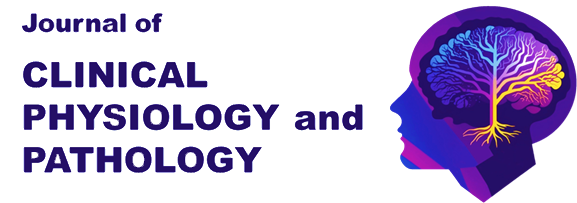Authors
Margarita Kostyaeva, Svetlana Dragunova, Nenad Zindovic, Yana. Emets, Iliya Dragomirov, Vsevolod Andryushin, Sofia Amirkhanyan
For сitation
Kostyaeva M., Dragunova S, Zindovic N., Emets I., Dragomirov I., Andryushin V, Amirkhanyan S. Patho- logical changes in traumatization of up- per jaw under the conditions of sinus lifting simulation in rats. Journal of Clinical Physiology and Pathology (JCPP) 2023; 2 (1): 4-10.
Abstract
Background. Simulation of surgical interventions in the maxillofacial region provokes a number of physiological reactive changes in the body of experimental animals. Thus, it was revealed that there are changes in the balance of the autonomic nervous system, activation of the hypothalamic-pituitary-adrenal and adrenergic systems, changes in behavioral reactions, as well as the occurrence of anxiety state. At the same time, the morphological causes of such reactions are not fully understood. Aims. The study provides data on morphological changes in the area of experimental trauma of the upper jaw during modeling of sinus lifting, dental implantation in rats. Materials and Methods. The study used male rats of the Wistar line weighing 210-280 g. Surgical interventions in all groups were performed under general anesthesia with the introduction of a solution of Zoletil 100 into the tail vein. In the first group, septoplasty (n=10) was simulated by the standard method by zigzag scarification of the nasal mucosa according to the standard method. In the second group (n=10), dental implantation with a titanium implant was performed after the hole was formed using a drill. In the third group (n=10), only a hole was made in the alveolar process of the upper jaw without subsequent manipulations. This group was a comparison group for groups with dental surgical interventions. In the fourth group, 10 rats underwent sinus lifting with bone chips with simultaneous implantation of a titanium implant. In the fifth group (n=10), with the help of a microdrill through a pre–formed hole in the alveolar process of the upper jaw, maxillary sinus was performed with damage to the mucous membrane of the ipsilateral maxillary sinus. Results. First group. On day 2, there was focal desquamation of a single-layer multi-row ciliated epithelium with local defects up to the basement membrane, multiple hemorrhages (extensive, with the presence of blood clots) in the mucosal lamina proper, mucosal edema (common), moderate diffuse infiltration (polymorphocellular). On the 4th day, signs of acute exudative serous inflammation were revealed. Second group. On the 2nd day, the wound surface contained cellular detritus, leukocytes, blood clots and a scab that did not adhere to the wound surface. (Fig. 2). On the 4th day, the signs of inflammation were not significant, macrophages, fibroblasts and lymphocytes predominated at the site of injury. On the 6th day, the formation of a clear demarcation line in the area of damage was noted with the formation of a shaft containing leukocytes and fibroblasts. Third group. On the 2nd and 4th days, the condition of the damaged tissues was characterized by the formation of scabs consisting of cellular detritus, necrotized tissue, leukocytes, erythrocytes (Fig. 4). On the 6th day, an accumulation of fibroblast-like cells, macrophages, and the formation of fibers of newly formed connective tissue was observed in the area of damage. Fourth group. On the 2nd and 4th days, extensive hemorrhages, the formation of scabs consisting of cellular detritus, necrotized tissue, leukocytes, erythrocytes were noted in this group. Fifth group. On the 2nd and 4th days, multiple hemorrhages with the presence of exudate blood clots were observed in the area of injury. Cellular detritus and necrotic tissue were present. Mucosal edema was widespread with extensive polymorphocellular infiltration. Conclusion. Different surgical interventions lead to different morphological changes, which probably affects the severity of physiological reactions under surgical stress.
Keywords
septoplasty, deviated septum, sinus lift, dental implantation, inflammation.
